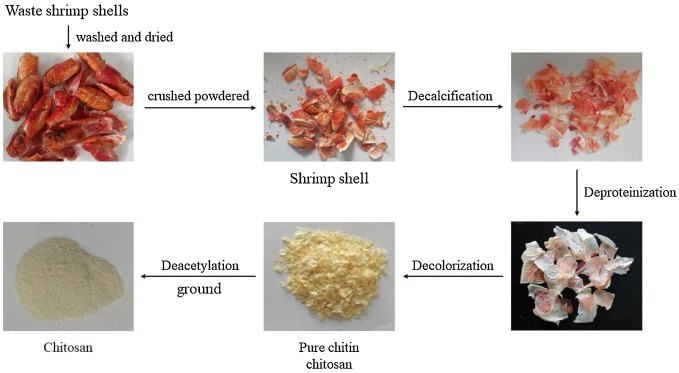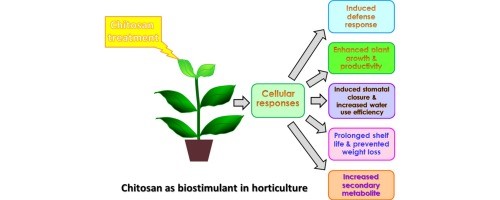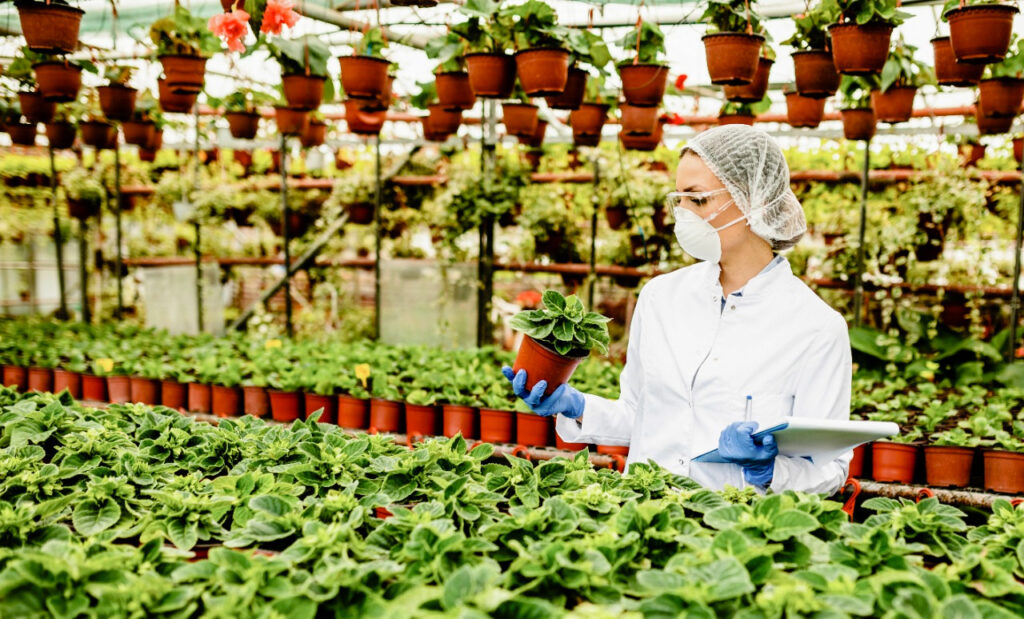- Demineralisation
- Deproteinisation

Chitosan-based materials exhibit various exciting properties, which make them applicable in many fields, including agriculture and horticulture, where they are used as biostimulants. Chitosan induces several defensive genes in plants, such as pathogenesis-related genes, like glucanase and chitinase. It also induces many enzymes in the reactive oxygen species scavenging system, such as superoxide dismutase, catalase, and peroxidase. The signal transduction pathway from chitosan that elicits its responses involves hydrogen peroxide and nitric oxide signals, and it may also directly control gene expression by interacting with chromatin. Chitosan has been used both as a biostimulant to stimulate plant growth and abiotic stress tolerance, and to induce pathogen resistance; however, these responses are complex and they depend on different chitosan-based structures and concentrations as well as the plant species and developmental stage.

- increase photosynthesis,
- decrease transpiration rates
- increase frost tolerance
- increase turgidity(less lodging)
- strong efficiency agent for fungal bacterial viral infections


